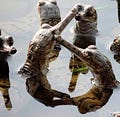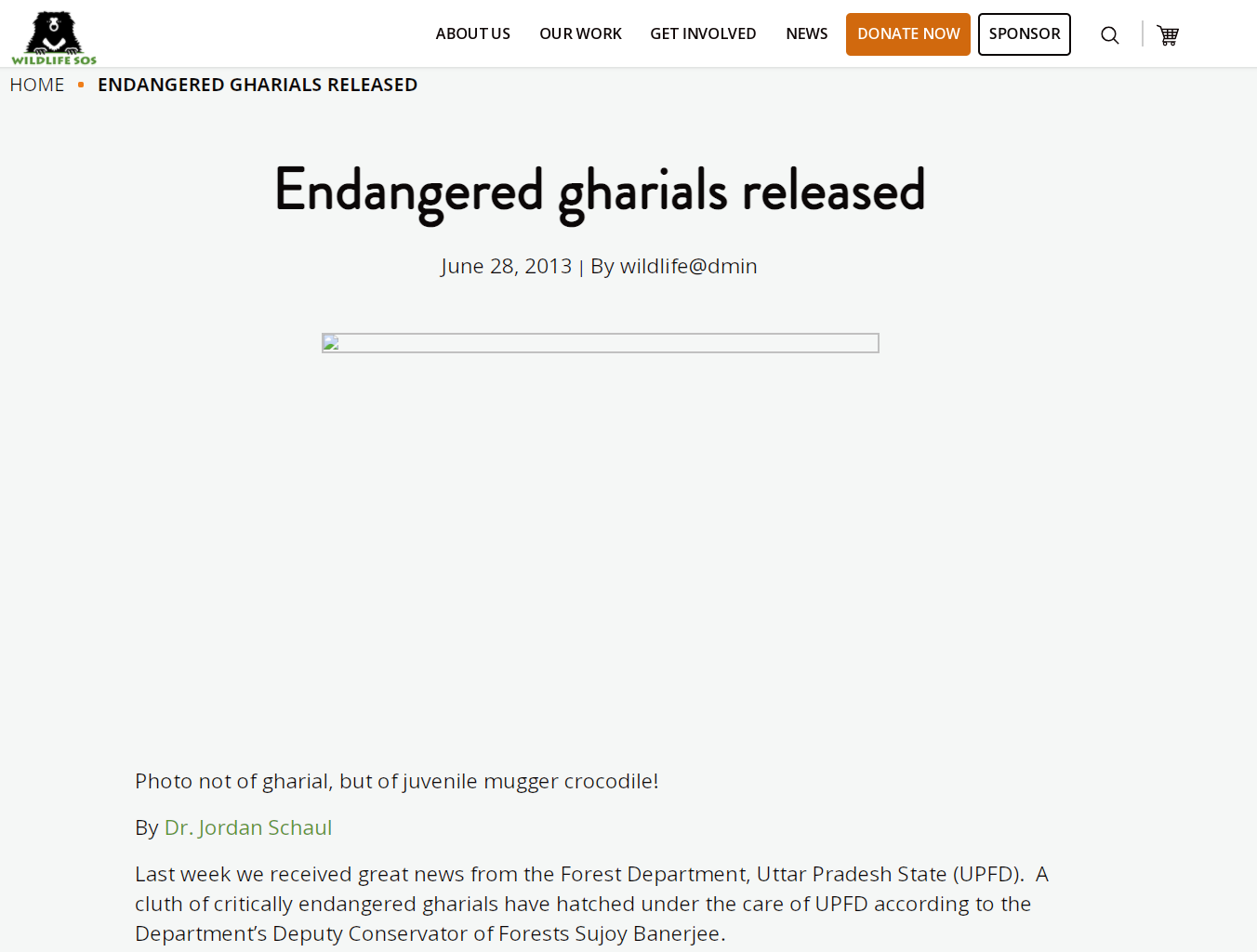By Dr. Jordan Schaul | Wildlife SOS | June 28, 2013 |
Photo by Sujoy Banerjee (Edited)
Last week, we received great news from the Forest Department, Uttar Pradesh State (UPFD). A clutch of critically endangered gharials has hatched under the care of UPFD according to the Department’s Deputy Conservator of Forests Sujoy Banerjee.
The Forest Department is one of our closest allies on many conservation fronts. The species we rescue, and the many native species that we care for and rehabilitate, include reptiles that range throughout India and elsewhere in South Asia.
Any success at rearing offspring of an imperiled species deserves recognition but propagating a critically endangered species warrants special attention. The gharial is a large fish-eating crocodile that inhabits riverine and riparian ecosystems and particularly fast-moving rivers. The species now occurs in only parts of its historical range in Nepal and India. These crocodilians are characterized by their large beak-like snouts. This large reptile has likely been extirpated elsewhere on the Subcontinent.
According to the Deputy, “This year, 55 gharial nests have been protected, 42 nests are in Bah Range in Agra district and the remaining 13 nests are in Etawah Range in Etawah district. These nests are only some of the nests protected; There are more nests of gharials in the vicinity of these protected nests. Each nest holds some 50 odd eggs. So we can expect quite a few individuals to be added to a critically endangered gharial population.
Last I was aware, there were only 200 reproductively active adult gharials in the wild based on census work conducted in its current range countries.
These crocs grow quite large, almost as large as the legendary man-eating saltwater crocodiles of Australasia. Unlike the “salties” the gharial prefers freshwater environments and hence, they rarely encounter each other in the wild.
The salties are native to coastal India inhabiting Indo-Pacific marine waters, including estuaries. The saltwater (Indo-Pacific) or estuarine crocodiles are much more comfortable on land, which makes sense based on their diet which includes large mammals. In this regard, the saltwater crocodile is similar to a third species found in Indian freshwater bodies. The mugger crocodile as it is called is also more comfortable on land as they prey on terrestrial animals like the salties.
Unlike muggers and salties, the gharial does not threaten the lives of people or livestock, but local fishermen often implicate the fish-eating croc, perhaps erroneously in the depletion of fisheries.
Although we don’t currently care for any rescued crocodiles, we do care for any that need medical attention or relocation. Baiju Raj, our Senior Wildlife Biologist, who also serves on the Crocodile Specialist Group of the IUCN, a renowned network of conservation biologists said, “That if we get crocodiles in they are almost always muggers, as there are so few gharials in the wild and the salties primarily live on the coasts.”
Dr. Jordan Schaul is the founder of Schaul PR Group. He was a regular contributor to pop culture and science publications, including Nat Geo Voices & HuffPost. Jordan was a consultant to Wildlife SOS in the United States & in South Asia at the time of this original publication.





